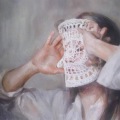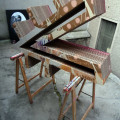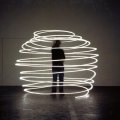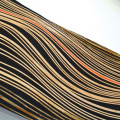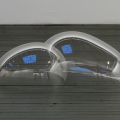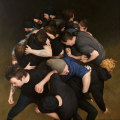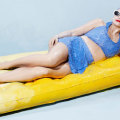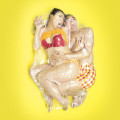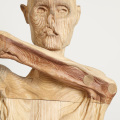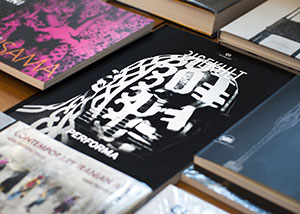My recent work involves the literal collapse of three-dimensional objects and structures into the picture plane. These found, utilitarian objects are deconstructed and cut into sometimes hundreds of abstract fragments before being reassembled two-dimensionally. The negative space is filled with carefully fitted pieces of painted wood, creating a solid plane in which the object is trapped in a parody of its former perspective. Through this dialogue between the deconstruction of the object and the construction of form, I am able to create works that are picture, relief and object in one. These humble, quotidian objects are easy to miss in spatial continuity with the surrounding world. This is particularly true of objects like crates and pallets, which are ubiquitous to the point of invisibility and often seen as possessing little or no intrinsic value. There are many reasons why art objects are perceived differently, not the least of which is that we are able to observe them in the vacuum of the museum or gallery. I’ve found that the picture plane, acting as an autonomous coordinate, is capable of performing a similar function by incorporating actual objects. When a pallet, for example, is incorporated into the picture, we come to see it, not as an eyesore or an obstacle that has to be navigated around, but as an actual object of aesthetic interest. The immediacy of these works owes much to the fact that they literally embody the objects they depict. Real interaction with an object demands a physical proximity that even the most effective representation can’t capture. For this reason, viewing these works in photographic images is problematic. Beyond the visual and phenomenological issues, there is the simple matter of how these pieces are constructed, which can be elusive even in person. I hope that the viewer will look closely at these images and remember that whereas the whole point of Magritte’s pipe was that it wasn’t, an integral aspect of these objects is that they are what they are. My work deals with the relationship between mind and reality in a different way than a lot of two-dimensional art. The pallet, which was once part of the physical, three-dimensional world, suddenly becomes autonomous from the rest of space. The planar, concrete object is somehow more remote and closer at the same time. By unifying the picture plane and the spatial environment, I’m trying to reconcile the dichotomy between pictorial and physical space, art and object, sculpture and painting. Sculpture has been defined as a three-dimensional object in space. These are three-dimensional objects in two-dimensional space and although they find themselves trapped, unable to perform their original functions, my hope is that they become more active and productive on the level of our experience.
Michael Zelehoski: Trapped in a parody of a former perspective
CREDITS: www.mikeweissgallery.com
LINK: www.michaelzelehoski.com
VIDEOCOMMENTSRELATED POST |
|
|
|
|




























